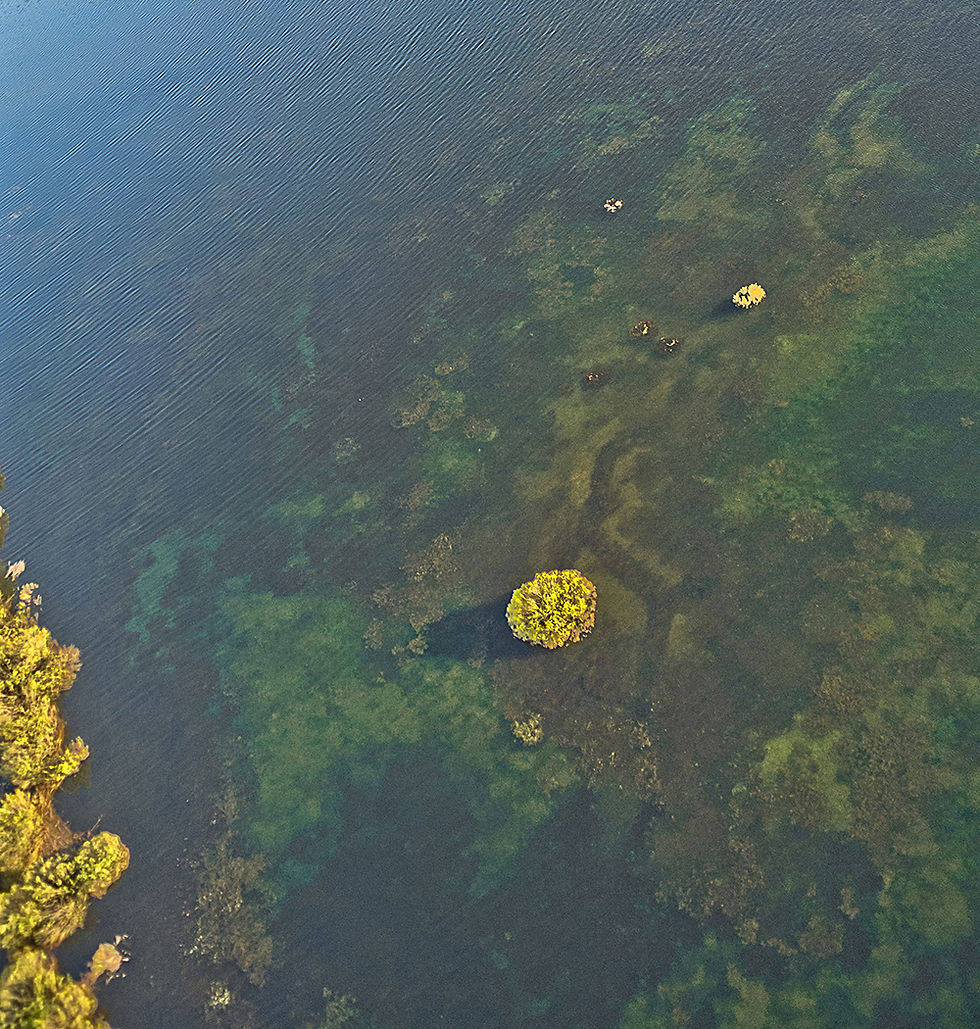'Miracle of Nature': Lake Cerknica
- kapjasa
- Apr 24, 2018
- 2 min read
Lake Cerknica is a true wonder of Nature: an intermittent karstic lake, one of the largest in Europe, that is very good at playing "now you see me - now you don't" ... When it is full, it is by far the largest lake in Slovenia, covering up to 38 square kilometers. Then the waters start to disappear underground through the sinkholes and caves, and in the summer the lake is completely gone ... just a few meagre streams meander through the vast grassland.

(Shore of Lake Cerknica from a kite. Trees are waiting for waters to subside)
This strange behaviour of Lake Cerknica baffled people since times immemorial. It even got the attention of the Ancients: helos Lougeon kaloumenon, writes Strabo in his Geographia: there is a marsh called Lugeon, referring to this wonder of nature hidden in the impenetrable forests of Illyria.

(Submerged grass, bushes and paths near Vodonos ("water-bearer") sinkhole area)
The first who dared to tackle Lake Cerknica's disappearing act in a (somewhat) scientific manner was freiherr Johann Weikhard von Valvasor, famous Slovene polymath, geographer and collector of fascinating stories. His treatise on Lake Cerknica, describing its filling and emptying by complex system of underground lakes, syphons and channels, was published in Philosophical Transactions of the Royal Society - and Valvasor even became a Fellow of R.S.

(A partially submerged tree and a deeper channel leading to one of many sinkholes)
The truth behind Lake Cerknica regular disappearing and reappearing is more prosaic: the autumn-winter-spring inflow from karstic springs on the eastern shore simpy overloads the sinkholes and caves at the western end, and the lake forms. In the summer the springs dry out, and the water goes underground through porous and soluble limestone lake bottom - and Lake Cerknica disappears again.

(Underwater roads, waiting to be used by farmers in the summer.)
When Lake Cerknica is almost gone and the water remains only near the sinkhole areas, all the fish frantically rush there. And when these shrinking pools are brimming with fish, the people frantically rush there and harvest them. No, literally - they don't catch the fish, they pick them from the water with sacks, buckets and baskets. by the hundreds.
Fish harvest used to be an important food source back then. Today Lake Cerknica is an important Natura2000 area, a strictly protected nature park, a fascinating ecosystem and habitat of many endangered plants, birds, and other animals, so the fish are no longer eaten, but saved from the disappearing waters and put in specially prepared ponds where they wait for the lake to fill again.

(Vodonos sinkhole area, where the water disappears last. In the summer it is brimming with fish.)
Lake Cerknica is a fascinating site, well worth a visit - for the nature, plants and animals, for an unique culture evolved around this intermittent lake, and for the mystery of Lake Now You See It - Now You Don't. A true miracle of nature!
All photos made with Nikon 1 J1 on a Great White Delta kite.




Comments